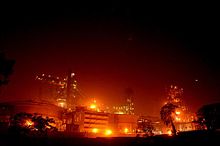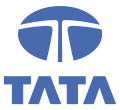
Jamshedpur, also known as Tatanagar, is the largest and the most populous city in Jharkhand and the first planned industrial city of India. It is a Notified Area Council and Municipal Corporation and also the headquarter of the East Singhbhum district. It is a popular tourist destination known for its forests, ancient temples and royal palaces. It was ranked as the cleanest city of India in the year 2019.

Steel Authority of India Limited (SAIL) is a central public sector undertaking (PSU) based in New Delhi, India. It is under the ownership of the Ministry of Steel, Government of India with an annual turnover of ₹105,398 crore (US$13 billion) for the fiscal year 2022-23. Incorporated on 24 January 1973, SAIL has 57,139 employees. With an annual production of 18.29 million metric tons, It is the largest government owned steel producer. The hot metal production capacity of the company will further increase and is expected to reach a level of 50 million tonnes per annum by 2025.

Tata Motors Limited is an Indian multinational automotive company, headquartered in Mumbai and part of the Tata Group. The company produces cars, trucks, vans, and busses.
Kalinganagar is a planned industrial town in Jajpur district of coastal Odisha, India. Kalinganagar is emerging to be major global hub in steel, power and ancillary products. A large number of steel plants including projects by Jindal Steel and Tata Steel are in various stages of implementation.
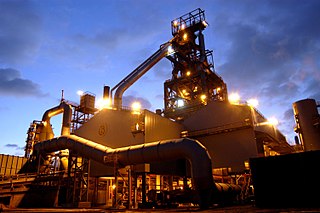
Tata Steel Europe Ltd. was a steelmaking company headquartered in London, England, with its main operations in the United Kingdom and the Netherlands. The company was created in 2007, when Tata Group took over the British-Dutch Corus Group.

Tata Power Company Limited is an Indian electric utility and electricity generation company based in Mumbai, India and is part of the Tata Group. With an installed electricity generation capacity of 14,110 MW out of which 5250 MW is from Non-Conventional(Green Energy) sources rest from thermal, making it India's largest integrated power company. In February 2017, Tata Power became the first Indian company to ship over 1 GW solar modules.
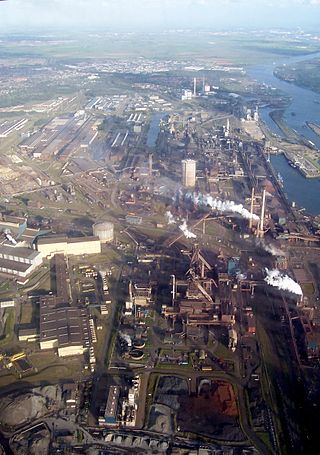
Koninklijke Hoogovens known as Koninklijke Nederlandse Hoogovens en Staalfabrieken (KNHS) until 1996 or informally Hoogovens. was a Dutch steel producer founded in 1918. Since 2010, the plant is named Tata Steel IJmuiden.

Port Talbot Steelworks is an integrated steel production plant in Port Talbot, Wales, capable of producing nearly 5 million tonnes of steel slab per annum. This makes it the larger of the two major steel plants in the United Kingdom and one of the largest in Europe. Over 4,000 people work at the plant.

Tata Chemicals Limited is an Indian multinational corporation with interests in chemicals, crop protection and specialty chemistry products. The company is headquartered in Mumbai and has operations across India, Europe, North America and Africa. Tata Chemicals is a part of the Tata Group and its shares are traded on the NSE and BSE. Tata Chemicals has a publicly listed subsidiary called Rallis India.

JSW Ispat Steel Ltd (JISL) was an Indian company with operations in iron, steel, mining, energy and infrastructure. It was set up as Nippon Denro Ispat Limited in May 1984 by founding chairman M. L. Mittal. It was listed on the Bombay Stock Exchange and National Stock Exchange of India until 2013 when it was merged with JSW Steel. It was headquartered in Mumbai and employed about 3,000 people.
Jamshedpur is the largest urban conglomeration in the state of Jharkhand, India and is also the first well-planned industrial city of India, founded by late Jamshedji Nusserwanji Tata. It is also known as Steel City and Tatanagar or simply Tata. In terms of economy Jamshedpur has second largest economy after Dhanbad in Jharkhand.

The Dhamra Port is a port in Bhadrak district, Odisha, India, on the shore of the Bay of Bengal about seven kilometres from the old port of Dhamra. The agreement to develop the port was signed in April 1998. The Dhamra Port Company Limited (DPCL) was formed as a result of a 50:50 joint venture between Larsen & Toubro and TATA Steel to run the port. The Port received its first vessel on 8 February 2010 and the first commercial vessel on 10 April 2011. The Port has an initial capacity of 25 million tonnes annually, eventually growing to 80 million tonnes annually. Greenpeace has opposed the project, claiming it threatens nearby protected areas and endangered species such as the olive ridley turtle
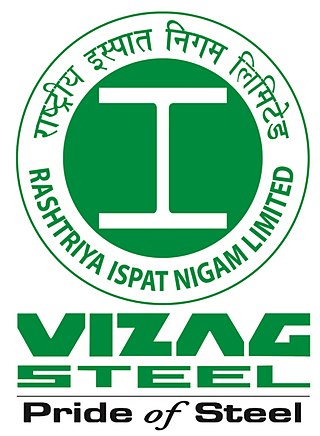
Rashtriya Ispat Nigam Ltd,, also known as Vizag Steel, is a central public sector undertaking under the ownership of Ministry of Steel, Government of India based in Visakhapatnam, India. Rashtriya Ispat Nigam Limited (RINL) is the government entity of Visakhapatnam Steel Plant (VSP), India's first shore-based integrated steel plant built with state-of-the-art technology. Visakhapatnam Steel Plant (VSP) is a 7.3 MTPA plant. It was commissioned in 1992 with a capacity of 3.0 MTPA of liquid steel. The cpsu subsequently completed its capacity expansion to 6.3 MTPA in April 2015 and to 7.3 MTPA in December 2017. The PSU is having one subsidiary, viz. Eastern Investment Limited (EIL) with 51% shareholding, which in turn is having two subsidiaries, viz. M/s Orissa Mineral Development Company Ltd (OMDC) and M/s Bisra Stone Lime Company Ltd (BSLC). The CPSU has a partnership in RINMOIL Ferro Alloys Private Limited and International Coal Ventures Limited in the form of Joint Ventures with 50% and 26.49% shareholding respectively.

Trostre Steelworks is a tinplate manufacturing facility located in Pemberton, Carmarthenshire, just outside Llanelli, West Wales. Planned by the Steel Company of Wales in 1947, today it is part of Tata Steel Europe's infrastructure.

The Tatanagar–Bilaspur section is part of the Howrah–Nagpur–Mumbai line and connects Tatanagar in the Indian state of Jharkhand and Bilaspur in Chhattisgarh. Part of one of the major trunk lines in the country, it passes through an industrial-mining area and handles high volumes of freight, particularly coal and iron ore.

Jamshedji Nusserwanji Tata was a pioneering Indian industrialist who founded the Tata Group, India's biggest conglomerate company. Named the greatest philanthropist of the century by several polls and ranking lists, he established the city of Jamshedpur. He is regarded as the Father of Indian Industry.
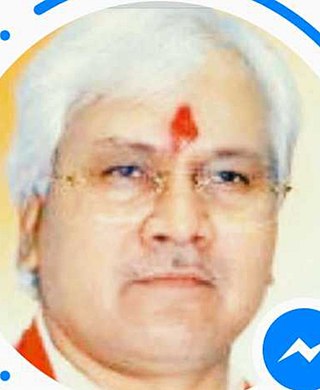
Rakeshwar Pandey is President, INTUC Jharkhand Indian National Trade Union Congress, INTUC and is related to Indian National Congress Party, politically. Rakeshwar Pandey stays in Jamshedpur, where he is Union President of over a dozen companies which include various companies of Tata Group, Nuvoco Vistas corp. Ltd India, Indian cable Company, etc. Besides, Pandey is also President of Tisco Mazdoor Union.

The Iron and Steel industry in India is among the most important industries within the country. India surpassed Japan as the second largest steel producer in January 2019. As per worldsteel, India's crude steel production in 2018 was at 106.5 tonnes (MT), 4.9% increase from 101.5 MT in 2017, which means that India overtook Japan as the world's second largest steel production country. Japan produced 104.3 MT in year 2018, decrease of 0.3% compared to year 2017.
